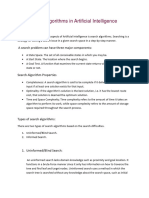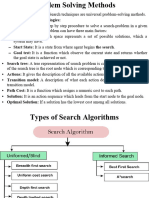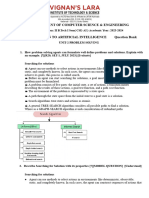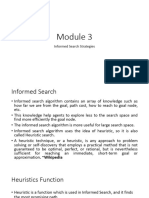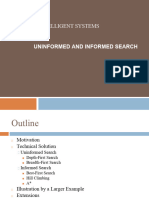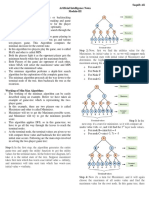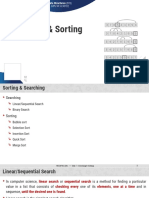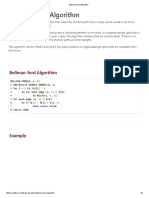0% found this document useful (0 votes)
22 views6 pagesWeek 3 Docs
The document discusses various search algorithms used in Artificial Intelligence, focusing on their definitions, properties, and applications. It covers uninformed search methods like Breadth-First Search and Depth-First Search, as well as informed searches like A* and Greedy Search, detailing their advantages, disadvantages, and scenarios for use. Key concepts such as search trees, path costs, and heuristics are also explained to highlight the importance of these algorithms in problem-solving.
Uploaded by
aashishbhurtel7Copyright
© © All Rights Reserved
We take content rights seriously. If you suspect this is your content, claim it here.
Available Formats
Download as DOCX, PDF, TXT or read online on Scribd
0% found this document useful (0 votes)
22 views6 pagesWeek 3 Docs
The document discusses various search algorithms used in Artificial Intelligence, focusing on their definitions, properties, and applications. It covers uninformed search methods like Breadth-First Search and Depth-First Search, as well as informed searches like A* and Greedy Search, detailing their advantages, disadvantages, and scenarios for use. Key concepts such as search trees, path costs, and heuristics are also explained to highlight the importance of these algorithms in problem-solving.
Uploaded by
aashishbhurtel7Copyright
© © All Rights Reserved
We take content rights seriously. If you suspect this is your content, claim it here.
Available Formats
Download as DOCX, PDF, TXT or read online on Scribd
/ 6



